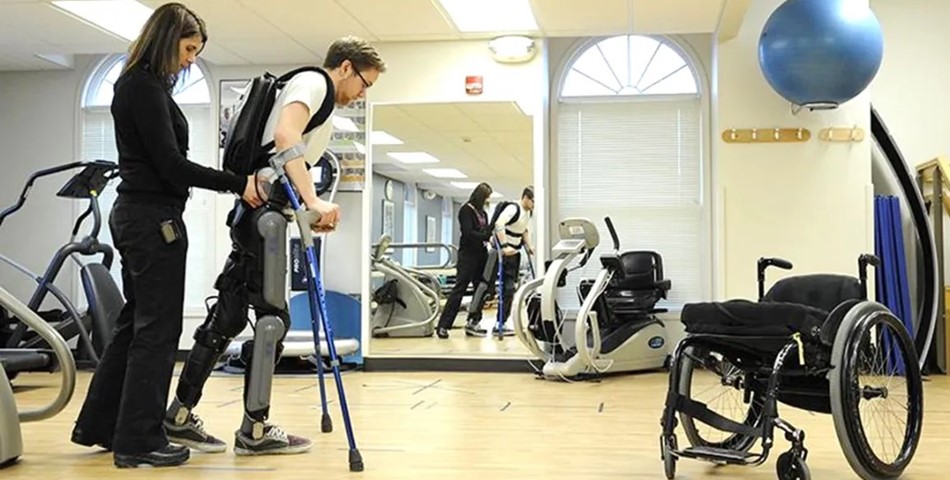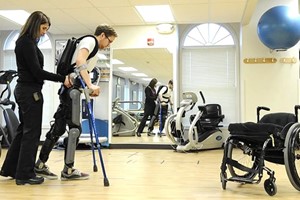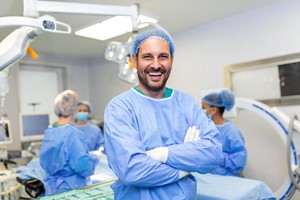Physical Medicine and Rehabilitation (PM&R) is a growing field that has seen many recent innovations. Some of the latest trends in PM&R include the use of stem cells and regenerative medicine, the increasing popularity of outpatient rehab, and the growing use of technology in rehab.
Here are 19 latest trends and innovations in physical medicine and rehabilitation
- Stem Cells
Physical Medicine and Rehabilitation (PM&R) is a medical specialty that helps people regain function after an illness or injury. PM&R doctors use a variety of treatments, including stem cells, to help their patients recover. Stem cells are unique cells that can grow into different types of tissues. They have the potential to treat a wide variety of illnesses and injuries.
- Health, Gym, and Wellness Synergy
Physical Medicine and Rehabilitation is a medical specialty that helps patients restore function, improve mobility, relieve pain, and prevent or limit permanent disabilities after injuries, illnesses, or surgeries. Physicians who specialize in physical medicine and rehabilitation often work in collaboration with other health or wellness professionals to provide the best possible care for their patients. In recent years, there have been several trends in the way physical medicine and rehabilitation professionals collaborate with other health professionals.
- Blood flow restriction rehabilitation
In physical medicine and rehabilitation, blood flow restriction rehabilitation (BFR) is a new treatment modality that is currently being investigated for its potential benefits. With BFR, a cuff is placed around the upper arm to restrict blood flow from the heart. This leads to an increase in the pressure within the muscle, which causes the muscle to expand and contract. BFR has been shown to improve muscle strength and size as well as reduce inflammation.
- Robotics Physical Medicine and Rehabilitation
Robots are increasingly becoming a staple in many industries. They are often used in manufacturing and assembly line jobs because they are efficient and can work around the clock. With the growth of robotics comes to their use in other industries, including physical medicine and rehabilitation. Physicians and therapists are starting to use robots to help patients recover from injuries or surgeries. The robots can be used for rehabilitation exercises, physical therapy, and even surgery.
- Musculoskeletal Ultrasound Physical Medicine and Rehabilitation
Ultrasound is widely used in many medical specialties for diagnosis and guidance of treatment. Musculoskeletal ultrasound is one such application that is helpful in the evaluation of soft tissue injuries. Ultrasound allows for real-time visualization of muscles, tendons, and ligaments and can help to identify the extent and severity of an injury.
- Virtual Reality
VR can be used to help patients regain movement and function after an injury or surgery. It can also be used to improve mental health and well-being.
- Hybrid Virtual Practices
Physical medicine and rehabilitation, also known as physiatry, is a branch of medicine specializing in diagnosing and treating injuries and conditions that affect movement. Physiatrists use a variety of treatments, including Physical Therapy, to help their patients regain movement and function.
- Subscription-Based Business Mode
Physical Medicine and Rehabilitation (PM&R) is a growing and necessary medical specialty, but its practitioners often find it challenging to establish and maintain a successful practice. The subscription-based business model has proven to be a successful way for PM&R physicians to generate a steady stream of revenue while maintaining control of their patients and their care.
- Regenerative Medicine
Physical medicine and rehabilitation (PM&R) are a field of medicine that uses regenerative medicine therapies to help patients with a wide range of conditions. Regenerative therapies can help improve function and quality of life for patients with conditions such as spinal cord injury, cerebral palsy, and multiple sclerosis. In addition to helping patients recover from injuries or illnesses, regenerative therapies can prevent disability in high-risk patients.
- Red Light Therapy Physical Medicine and Rehabilitation
Red light therapy is a form of phototherapy that uses low-level laser or light-emitting diode (LED) light to promote healing. RLT can treat a variety of medical conditions, including skin problems, joint pain, and chronic wounds. Researchers are also investigating whether red light therapy can help improve symptoms of conditions such as Alzheimer’s disease, cancer, and depression.
- Outpatient Rehab
Inpatient rehabilitation has been the traditional model for rehab care, but outpatient rehab is growing exponentially. There are many reasons for this growth, including the increasing availability of outpatient services, the growing acceptance of outpatient care by insurers, and the growing number of people with chronic conditions who can be treated safely and effectively in an outpatient setting.
- Motion Capture and Video Biofeedback
This technology allows physical therapists to track the movement of patients in order to assess better and treat their injuries. In addition, video biofeedback can help patients learn how to move their bodies properly.
- Managing Pain and Swelling (Post-surgical)
This can make it difficult for patients to move around and perform everyday tasks. Physical therapy can help reduce pain and swelling and improve patients’ quality of life.
- Patient-Centered Care Physical Medicine and Rehabilitation
Patient-centered care is a healthcare model that puts the patient at the center of their care. It is an approach that is holistic and individualized, and it focuses on the patient’s needs and preferences.
- Resurfacing Versus Replacement for the Knee and Hip
Knee and hip replacements are standard surgical procedures that can improve mobility and relieve pain in people with arthritis and other joint conditions. While both replacement and resurfacing procedures involve the implantation of artificial joint surfaces, replacement involves the complete removal of the damaged joint surfaces and the installation of new ones, while resurfacing preserves as much healthy bone and tissue as possible.
- Exoskeleton for High Energy Lower Extremity Trauma
A new exoskeleton innovation is to help with the treatment of high-energy lower extremity trauma. The exoskeleton is still in development is designed to provide support and assistance to the lower extremities, allowing patients to walk and bear weight sooner after an injury. The exoskeleton can help reduce the risk of long-term disability in patients with lower extremity trauma.
- Artificial Discs for the Spine
One common ailment that Physical Medicine and Rehabilitation physicians treat is spinal disc herniation. This occurs when the gel-like material inside the disc leaks out and puts pressure on the spinal cord or nerve roots. Depending on the severity of the herniation, a patient may experience pain, numbness, tingling, or weakness in the back, legs, or arms.
- Reverse vs. Traditional Arthroplasty (Shoulder)
Shoulder arthroplasty, more commonly referred to as shoulder replacement surgery, is a procedure that resurfaces the damaged shoulder joint with an artificial implant. There are two main types of shoulder replacement surgery: reverse and traditional. Reverse shoulder replacement is a newer, less invasive surgery that is becoming more popular. Traditional shoulder replacement surgery is the more common type of surgery, but it is more invasive and has a longer recovery time.
- Instrumented Insoles Physical Medicine and Rehabilitation
Instrumented insoles are devices used to provide real-time feedback on the foot and ankle biomechanics. They are often used to improve patient outcomes in conditions such as plantar fasciitis, Achilles’s tendonitis, and knee pain. The insoles can be used to provide feedback on variables such as step count, posture, and balance.
Source Michigan Medicine













